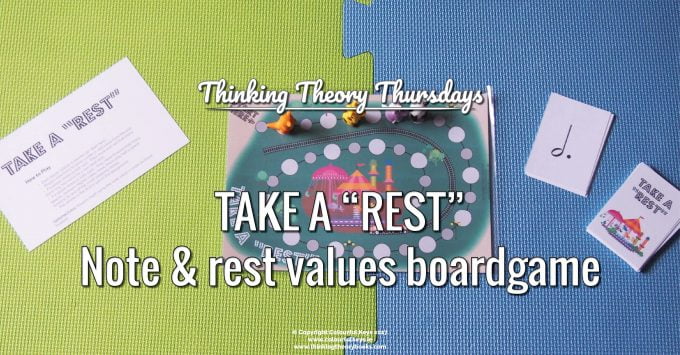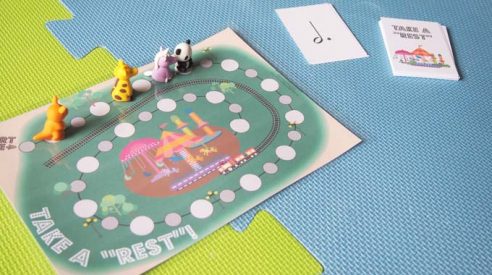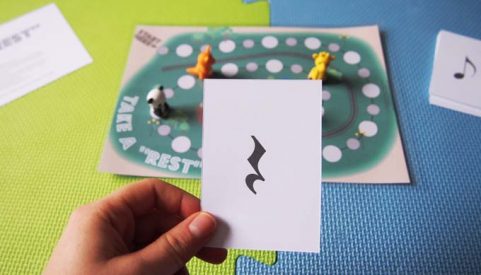In chapter 2 of Thinking Theory Book One, I introduce some slightly more complicated note values. Here students learn about quavers, dotted crotchets, and three different types of rests.

While these note values are not “difficult”, younger students may get tripped up by the quaver being half a beat. Most schools won’t teach fractions until kids are about 9 years old, so this can be a foreign concept to many kids.
When it comes to teaching rest values, there’s the complication of minim and semibreve rests looking almost the same…and the semibreve rest counting for a whole bar in any time signature.
But never fear! I’ve got a flipped music theory video, and a music theory boardgame to help you out when it comes time to cross these bridges.
Note & Rest Values Video
This video is a follow on from the basic note values video, and introduces students to quavers, dotted crotchets and rests. Send the video home to parents and save some lesson time that you can use for playing theory games, or working on Thinking Theory Book One pages 8 and 9 together.
UK/International Version
USA Version
Note & Rest Value Boardgame

The twist in this fun game is two-fold. There are little spaces in between the big ones, so quavers (eighth notes) only take you half a step forward. Rests make you sit out your turn so it’s great for teaching rest values (but may cause some resentment to be attached to them).
How to Play
- Each player places a counter on “start here”.
- Players take turns to draw a note or rest value from the pile.
- If a player draws a rest card – they must wait out that many turns (e.g. two turns for a two beat rest).
- If a player draws a note card – they move forward that many spaces. Quavers/eighth notes move them only half a space forward, to one of the small stepping stones.
- The winner is the first to get to the playground.
Optional Extra: Players must name the note value in order to move forward.

Assembly
This game is very quick to assemble, you only need to:
- Print out the game board (page 3).
- Print out the note and rest cards (page 4-7).
- Print the decorative back (page 8) on the back of the note and rest cards if desired.
- Cut the cards apart.
- Find game counters such as erasers, paperclips, buttons or small toys. You need one counter per player.
- Laminate the game board and cards if desired.

Subscribe to updates and get the Take a Rest Board Game
Enter your details to subscribe to the newsletter for piano teachers with information, tips and offers.
I hate spam as much as you do! I'll only send you information that's directly relevant to music teachers and you can unsubscribe at any time.
Vibrant Music Teaching members, you can access this resource inside the VMT library. Not a member yet? Find out more about becoming a member here.
More Flipped Thinking Theory
If you liked the approach of this video, you might also like these others:
- Flipped Basic Note Values
- Flipped Beginning Solfa
- Flip and Gameify Landmark Notes
- Flipped Time Signatures
- Flipped Note & Rest Values
- Flipped Dynamics
- Flipped Accidentals, Tones & Semitones
- Flipped Articulation
Which note or rest value do your students find most difficult?
Do they forget the difference between minim and semibreve (half and whole) rests? Perhaps they just don’t get the concept of fractions yet?
Let me know your music theory struggles and victories in the Vibrant Music Studio Teachers group on Facebook or in the comments below.
Another wonderful, fun resource, Nicola. Thanks so much. I’m sure the students will love this one, especially with the added tension of having to sit out the value of the rests. Very cute idea!
Thanks Barbara! Hope your students have some fun with this one, and you get to “take a rest”! 😉